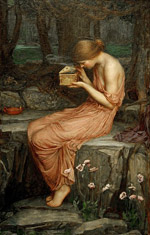Psychology, Department of

Department of Psychology: Faculty Publications
Document Type
Article
Date of this Version
2013
Citation
Published in Behavioral Neuroscience 127:3 (2013), pp. 465-473; doi: 10.1037/a0032691
Clarification published in Behavioral Neuroscience 127:5 (October 2013), p. 811; doi: 10.1037/a0034367
Abstract
Pavlovian conditioning processes contribute to the etiology of nicotine dependence. Conditioning involving interoceptive stimuli is increasingly recognized as playing a role in many diseases and psychopathologies, including drug addiction. Previous animal research on diminishing the influence of interoceptive conditioning has been limited to antagonism and nonreinforced exposures to the drug stimulus. The goal of the present research was to determine whether interoceptive conditioning with a nicotine stimulus could be diminished through an unconditioned stimulus (US) devaluation procedure. In two separate experiments, male Sprague–Dawley rats received nicotine injections (0.4 mg base/kg) followed by intermittent sucrose (26%) access in a conditioning chamber. On intermixed saline sessions, sucrose was withheld. Conditioning was demonstrated by a reliable increase in head entries in the dipper receptacle on nicotine versus saline sessions. After conditioning, rats in a devaluation condition were given access to sucrose in their home cages immediately followed by a lithium chloride (LiCl) injection on 3 consecutive days. On subsequent test days, nicotine-evoked conditioned responding was significantly attenuated. Within-subject (Experiment 1) and between-subjects (Experiment 2) controls revealed that the diminished responding was not attributable to mere exposure to the sucrose US in the devaluation phase. Experiment 2 included a LiCl-alone control group. Repeated illness induced by LiCl did not reduce later nicotine-evoked responding. These findings suggest that there is a direct association between the interoceptive stimulus effects of nicotine and the appetitive sucrose US (i.e., stimulus–stimulus) rather than a stimulus–response association.


Comments
Copyright © 2013 American Psychological Association. Used by permission.